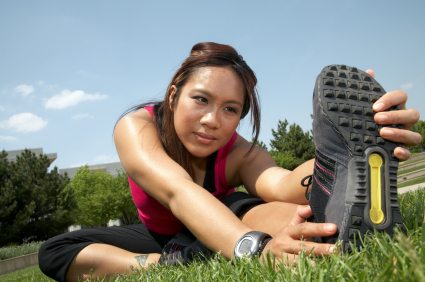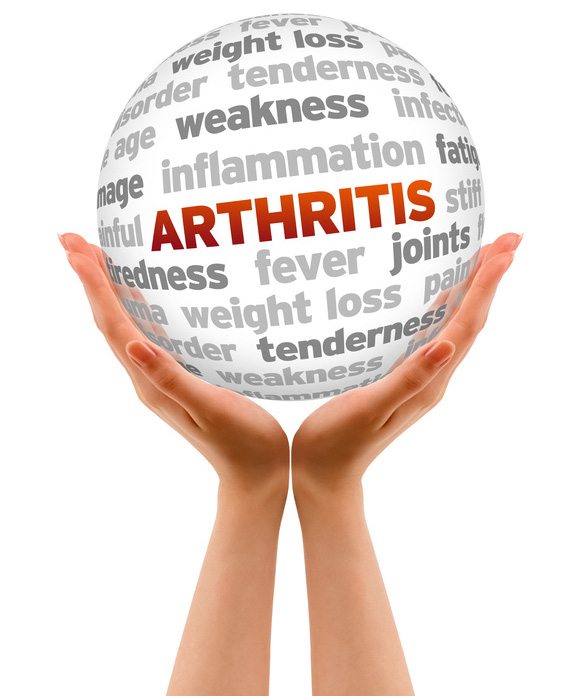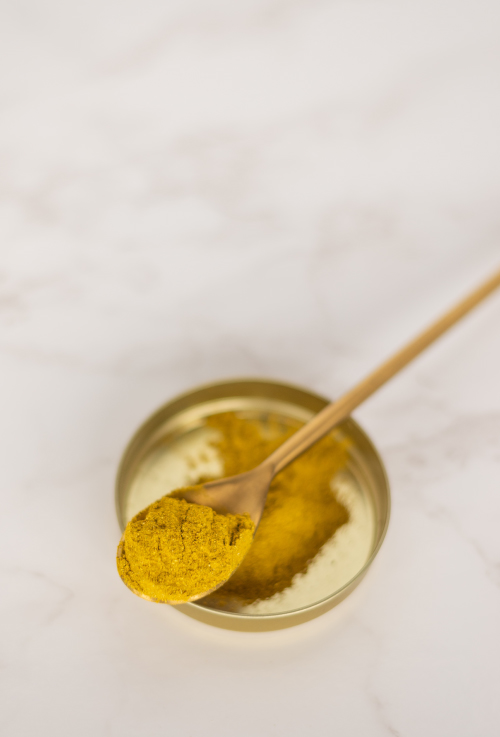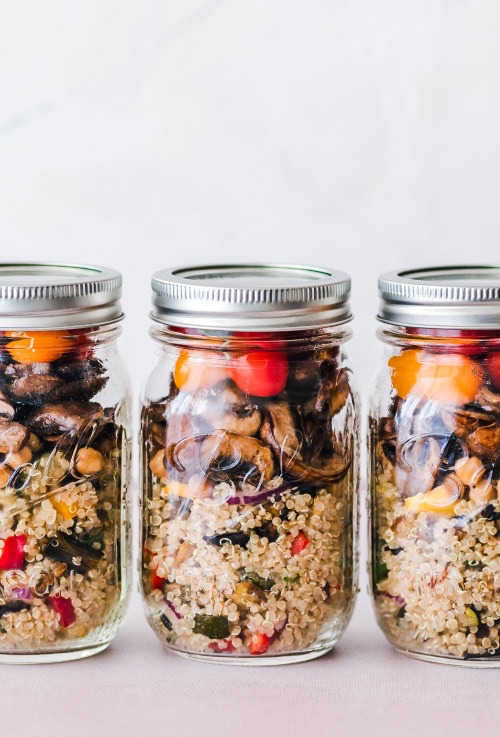In my relatively short 38 years of life I sometimes feel as though I’ve been dealt some pretty crummy cards. It seems as though I have had an unusual number of “old person” physical issues, including 2 hernia surgeries, an appendectomy, a diagnosis with multiple sclerosis (MS) in 1998 and joint pain and arthritis in my hip that I ended up having to have two major surgeries for (I would later learn my hip issues were caused by an underlying congenital orthopedic abnormality.)
But luckily my health woes seem to be behind me for now and as I approach my 40th birthday I feel pretty amazing. I have also learned that there is hope and help for so many people who are suffering unnecessarily with pain and other symptoms related to inflammation.
The good news is, by following an anti-inflammatory diet, exercising regularly (which not only strengthens the body but also plays a critically important role in reducing inflammation), and supplementing with a few key nutrients, the symptoms of conditions related to inflammation including multiple sclerosis, fibromyalgia, endometriosis and so many others, can subside. Even a condition that you think of as being degenerative and totally unrepairable, like arthritis, can improve.
I truly believe the body wants to move pain-free and wants be healthy, but it needs a little help.
Back Before I Had a Worry in the World…
In my younger days I was very into dance, gymnastics and cheerleading. I loved nothing more than to leap, jump and flip anywhere I could find a wide open space. After graduating from high school I even took adult ballet class just for fun in my early twenties and loved every single minute of it. Although I knew I wouldn’t be able to be a gymnast or cheerleader in my adult life I had always thought I would just take dance as a fun way to stay fit and I was certain it was something I would be able to do for years to come.
Unfortunately, my dancing days came to a screeching halt when my hip issues began back in 2000 during my pregnancy. Over the years though I never lost my love for dance and so my husband would frequently take me to the ballet. When the Miami City Ballet came to town last weekend we went to see their performance of “Don Quixote” (which, by the way, is such a bold and lively ballet!) and I walked out wishing I could grab a tutu and leap right back to our car.
The next day my husband and I went to a secluded part of the beach where we like to workout together when we get the free time (we do a mix of all sorts of callisthenic-type exercises like bear walks, lunges in the deep sand, pushups, windmills, side bends, etc.) I was feeling so strong that day that I could sense for the first time in 13 years my body would be capable of doing some of the things it used to do, things that used to come so easily and so naturally to me. And of course with the beach as my “stage” and nobody but my husband watching I was free to see what my body could do….
I discovered I could actually leap again!
I was amazed that I could do so much more than I ever in my wildest dreams imagined I would be able to do again. If you follow Clean Cuisine regularly and know all about my decade long joint pain and hip surgery ordeal, then you can understand why I am so elated with being able to leap again. Of course leaping around on the beach doesn’t solve world peace or accomplish much, but just as it did when I was a kid, it still makes me happy.
Doctors Don’t Really Know All of the Answers
When I had my second hip surgery at the Hospital for Special Surgery in NYC, I knew not to ask my orthopedic surgeon, Dr. Robert Bully, if he thought I would ever be able to leap again, what a silly question considering that doing such a thing would serve no functional purpose and at the time I was having a hard enough time sitting and walking without pain.
Even though I always hated jogging I did ask Dr. Bully if he thought I would ever be able to jog again. Jogging seemed like a more reasonable activity that “normal” people might want to do, I suppose. The answer he gave was, “Probably not because although I can correct the anatomical abnormality within your hip joint, I can’t repair the damaged cartilage. But I really do think I can get it to where you can walk without pain. And definitely you won’t have pain sitting anymore.” Considering the severe joint pain I was having at that time his promise sounded like a miracle and it was more than enough to encourage me to go through with the surgery (a 7-hour femoral derotational osteotomy where my thigh bone was broken in half — it was NOT fun!)
Dr. Bully did not want to set my hopes too high and so he didn’t want to promise me anything he couldn’t deliver. Trust me, all doctors do this; I happen to be married to one! But the truth is the doctors do not know all of the answers. As a surgeon, Dr. Bully knew he could fix my mechanical issue within my hip, but he didn’t know whether my body would repair the cartilage damage. The reality is not all of the patients who have femoral derotational osteotomies do well.
Joint Pain and Arthritis are REAL Problems
Because of my orthopedic abnormality I was relatively young to have joint pain / arthritis, but I certainly was not alone! More than 52 million Americans suffer from some form of joint pain/ arthritis—that’s 23% of the entire adult population.
“Arthritis” is a collective term for a group of debilitating diseases, the most common of which is osteoarthritis, which afflicts more than 21 million adults in the US. Rheumatoid arthritis is another common form of arthritis.
Despite the fact that half of all prescriptions for non-steroidal anti-inflammatory drugs (NSAIDS) such as ibuprofen are written for osteoarthritis, those drugs do nothing more than transiently blunt the pain—they have no long-term impact on joint health.
Doctors now understand, however, that an inflammatory assault on joint cartilage happens in both osteoarthritis and rheumatoid arthritis.
The good news is there is SO much that can be done non-surgically to reduce inflammation and improve joint pain and arthritis symptoms.
Joint Pain and Arthritis CAN Improve
My whole terrible hip experience has taught me the tremendous ability the body has to heal itself.
I have discovered that there is real research in the medical literature showing cartilage CAN regenerate and that joint pain and arthritis can improve. Just because you have joint pain due to cartilage wear and tear today does not mean you are doomed to a life of pain. I think for anyone who has joint pain this is incredibly promising news.
The damage that my orthopedic abnormality had caused my hip joint cartilage was severe and I not only had a huge labral tear but also over a decade of scar tissue and joint degeneration. Because I had a mechanical and anatomical abnormality (which, in my case, was a condition called Femoral Retroversion where my femoral head was rotated 22 degrees “off” what was normal and was pressing into my pelvis and ripping my cartilage), my body would never heal until the mechanical issues was fixed through surgery. But most people with arthritis and joint pain do not have orthopedic abnormalities like I had and so most people do not need to have their leg broken in half and the top part of their femoral head rotated around in their hip socket in order to alleviate hip pain. Many people can improve their joint pain and arthritis without surgery.
For me, once the impingement was corrected with the surgery my body was finally able to heal itself and my joint pain has steadily improved since the surgery back in 2012.
Some of the Things I Believe Helped Me Recover
The orthopedic problem I had and the surgery I had to correct it is very rare, but I know for a fact I am doing far, far better than the vast majority of patients who have had the same surgery. And I don’t think it is just coincidence. I am convinced my anti-inflammatory lifestyle played a key factor in how well I am doing.
Here are a few of the things I think that really helped me recover from my hip surgery and reduce joint pain.
- I have done extensive amounts of physical therapy, to regain my range of motion and strength, and I did far beyond what the physical therapists suggested I do. If you have joint pain it is absolutely critical that you keep your muscles strong (strong muscles cushion the joints) and exercise regularly because exercise itself reduces inflammation and brings blood flow to the area (blood is healing.) The absolute worst thing you can do for achy or arthritic joints is to rest them long term.
- I also know the “whole foods” anti-inflammatory diet I follow is key to keeping my joints lubricated and pain subsided. And of course a “whole foods” anti-inflammatory diet is also rich in nutrients (such as vitamin C, vitamin E, calcium, magnesium, vitamin K2, etc.), all of which are essential for rebuilding cartilage.
- I would start each day with a hot bath. The heat did wonders to relieve morning stiffness. I would slide right out of the bath and then onto the floor to stretch for a good 10 or 15 minutes. I am convinced the morning bath and stretching routine was really important.
- I created this super-potent anti-inflammatory tonic with turmeric and drank a shot every day. Turmeric contains curcumin, which has potent anti-inflammatory properties and is especially helpful for joint pain.
- I also give a lot of credit to taking a high-dose pharmaceutical-grade anti-inflammatory fish oil.
- And I am certain the joint supplement (Advanced Joint Health Complex) with boswellia and glucosamine has been tremendously helpful. Advanced Joint Health Complex actually has real research behind it and has been clinically proven to promote mobility, enhance flexibility, improve joint function and support long-term joint health.
- I also eat a lot of sulfur-rich garlic, as sulfur is essential in the repair and rebuilding of bone, cartilage, and connective tissue.
- And believe it or not, I think my 2 tablespoons of Raw Apple Cider Vinegar each day are also very helpful! I haven’t found any real research on the benefits of the raw apple cider vinegar for joint pain, but I have heard so many other people say they think it helps and I figure it can’t hurt!
- Finally, maintaining a healthy body weight is absolutely critical for reducing stress and strain on your joints. Also, keeping your body fat to a healthy low level will keep inflammation down because fat cells actively promote inflammation. By following an anti-inflammatory diet that is rich in nutrients you will be able to lose excess body weight without “dieting.”
All in all, I truly believe the body wants to be strong, healthy and pain-free, but you do have to play your role in helping out. Sitting on the couch and eating potato chips is not going to help reduce joint pain.









